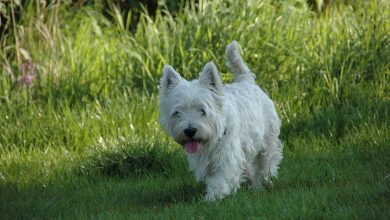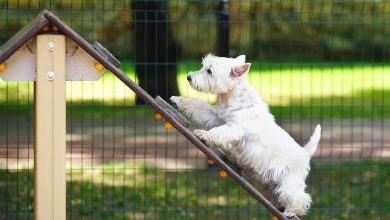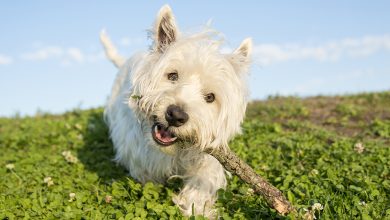Does Your Westie Have Shoulder Osteochondritis Dissecans?
Different breeds may be predisposed to OCD in different joints.
Having looked at specific conditions for the neck we are going to start looking at the forelimb. We’ll begin with the shoulder as this is the first joint we come to.
Let’s start with a little bit of anatomy to familiarise ourselves with the area involved. As with the human body, the shoulder is comprised by two main bones, the arm bone known as the humerus and the shoulder blade (scapula).
Just for your information dogs don’t have a collar bone (clavicle) unlike us. The joint is classed as a ball and socket joint allowing for large ranges of movement in multiple planes.
Some of you may have heard of OCD……in this case it doesn’t mean obsessive compulsive disorder, it stands for osteochondritis dissecans (OCD). This is a developmental condition which can be found in both animals and humans.
Bones have their own blood supply and any disruption to this, especially in dogs that grow too quickly, can occur when the rapid cartilage growth outstrips the blood supply to that bone, causing the bone under the cartilage to die. This causes abnormal cartilage development leading to lameness, pain and even the possibility of flaps of cartilage becoming separated from the bone underneath. Unfortunately, once OCD starts to develop inflammation of the joint and associated bones (osteoarthritis) will occur. Whilst osteoarthritis cannot be cured it can be managed effectively in most dogs with hands on physical therapy and potentially medications.
WHAT CAUSES OCD?
While OCD can affect different joints, in this instance we are looking at the shoulder. Different breeds may be predisposed to OCD in different joints, and while this condition is predominantly seen in Labradors and giant breeds, shoulder OCD is most commonly seen in Border Collies, Great Danes and Irish Wolfhounds. However, it should never be ruled out in smaller breeds especially if there have been dietary/nutritional issues in the first few months, hormonal imbalances, or joint trauma.
The general rule of thumb for growing puppies is 5 minutes’ walk per month of age, so a 4-month-old puppy should have a 20-minute walk. It is important to keep to this as much as possible as it can take up to 12-18 months for bones to fully form depending on the breed.
Most dogs will show signs before they reach the age of one, but occasionally signs may be present in the older dog as the musculature weakens.

SIGNS
▪ Lameness
▪ Stiffness
▪ Pain
▪ Joint Swelling
▪ Reluctance to play
▪ Depression
In order for a diagnosis to be made the Vet will give your dog a thorough examination and will suggest x-rays.
TREATMENT
While small cartilage defects can be treated with non-surgical management (hands on physical therapy and medication) if the discomfort is minimal, the majority will require surgery.
Surgery for small or shallow lesions is usually arthroscopic (keyhole) removal of the cartilage flap and debridement (removal of the dead cartilage/bone). The cartilage defect will then heal by the formation of a scar, this may take several weeks. For larger lesions there are implants available which resurface the joint area.






